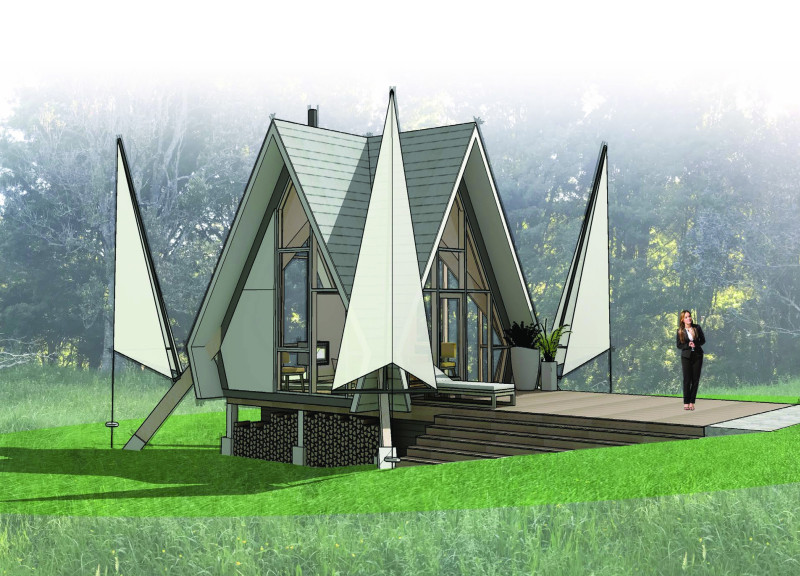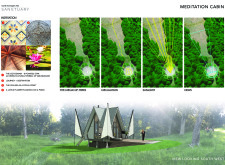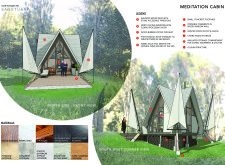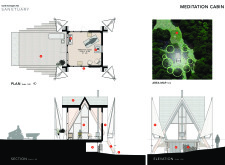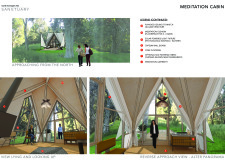5 key facts about this project
The structure features a distinct A-frame design enhanced by fabric sails, which serve both functional and aesthetic purposes. These elements are intended to evoke the silhouettes of trees, reinforcing the project’s integration into the natural environment. This design choice emphasizes the interplay between architecture and nature, inviting an immersive experience.
Unique Design Elements and Approaches
One of the standout features of the Meditation Cabin is its incorporation of the octogram, a geometric shape symbolizing abundance. This motif can be perceived throughout the design, serving as a reminder of the intended spiritual journey for its users. The plan facilitates a clear flow from the entrance to the meditation area, with strategic placement of functional spaces that support the overarching purpose of tranquility and reflection.
Key elements include a central meditation space of approximately 4.21 m², flanked by supportive areas such as a floral processing altar and a wood-burning stove. This well-defined spatial arrangement allows users to not only meditate but also engage in practices that require a calm and focused environment. The circular alignment of trees around the cabin further accentuates the feeling of being enveloped by nature, creating an atmosphere of safety and peace.
Materials utilized in the construction of the Meditation Cabin include wood decking for warm transitions, fabric sails that offer flexibility and adaptation to the environment, and a glulam structure for strength and stability while maintaining a lightweight approach. The exterior features Sho Sugi Ban wood siding, offering aesthetic appeal as well as durability, resistant to environmental challenges. Photovoltaic roofing supports energy efficiency, reinforcing the project’s commitment to sustainable design practices.
Interaction with Light and Space
The design successfully employs large glass windows to seamlessly connect indoor and outdoor environments, allowing natural light to fill the interior. This approach enhances the experience of space, guiding occupants toward a meditative state. The design also incorporates features that promote accessibility, such as a flagstone access ramp, ensuring that the cabin is available to all users.
The careful consideration of furnishings and finishes, including cork flooring for comfort and style, contributes to the overall intention of the space. This focused design strategy enhances user experience, ensuring the cabin meets its functional requirements while providing a unique architectural expression.
For a comprehensive understanding of the Meditation Cabin and its unique architectural features, we encourage readers to explore the project presentation in detail. Architectural plans, sections, and design elements are available for review, offering deeper insights into the innovative ideas that define this reflective space.


